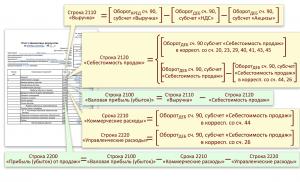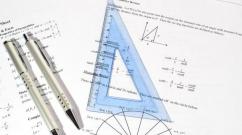Human energy centers. Energy chakras Human energy chakras
Today we will talk about energy centers of the first level. I want to say right away that these are not chakras. I don’t work with chakra structures, and in general, I don’t recommend it to you.
The location of the centers is somewhere similar, somewhere slightly different from what is written in eastern chakra literature, but the centers are structures of a completely different quality than the chakras.
The centers of the first level do not directly belong to a person; these centers exist in space, like certain energy areas, and project their energy into a person. When some forces block these rays, the energy does not reach, the person loses connection with the source, the center becomes inactive.
Let's try to see and feel our energy centers. When these centers are blocked, a person begins to have problems - something is wrong, something is not going well (in health, in relationships or in business), there is not enough energy. Therefore, our task is to ignite the centers so that they are like gas burners, so that they shine in all directions. All centers have a plasma color, like the core of the sun; only the shades can differ.
So, the first center. He projects his energy into the perineal area.
Try to see what kind of space you have in this zone: dense, loose, what color, texture? Maybe you will see some objects shoved into this center. You can help yourself with breathing. While inhaling, you attract luminous matter to you from all sides, and while exhaling, gently activate it.
The first center is responsible for the basic instincts of a person, for maintaining the configuration of the physical body, skeletal system, and skin. Psychologically, danger signals go through the first center. As a rule, very anxious people who fear for their lives have enormous infiltration in the area of the first center. The active state of the center, when it has enough power and shines in all directions, gives a feeling of happiness. For men, the first center is the genital center, for women it is the second.
Second center. It is located in women in the middle of the uterus, in men - half the distance from the navel to the perineum. The criterion that this center works normally in women is a constant rhythm in the uterus. It must constantly, rhythmically contract and unclench. If there is no rhythm in the uterus, then the center is inactive. Pelvic breathing can also help launch the uterus, when the pelvic bones open during inhalation and contract during exhalation. The same thing: try to see in what state your second center is, what prevents it from working, what is the energy difference between the first and second center, what foreign thing do you feel there? As soon as a foreign object comes out of you, then on the internal screen you can see the situation in which it was introduced there. It happens that there is a breakdown in the center, then energy flows out of it constantly.
The third center is located in the middle of the abdomen, in the navel area. This is the center on which social activity and social success are tied. This is the strong-willed center for implementing your decisions. We make the decisions themselves at another center – the fifth, and implement them at the third. Those who do not have enough strength for active implementation, as a rule, have the third center in a depressed state.
Each center is responsible for the work of nearby organs. The third center, in addition to its social role, is responsible for digestion and general physical condition.
Those who have been practicing for the first time, try to feel what changes have occurred in your centers during the lessons.
The centers are activated in a chain - step by step, like a garland. The third center passes the baton for activation to the fourth center, which is located in the middle of the body in the solar plexus area.
The fourth center is the center of balance between instincts and reason. It allows you to establish balance in relationships. If you have an imbalance in some relationships, then there are probably problems in the area of the fourth center. This center nourishes the pancreas, gall bladder, liver, kidneys, spleen, and stomach.
The fifth center is in the throat area. Here the stress can be through the roof: all sorts of grievances, anxieties, worries, unfulfilled desires, constant internal dialogue. This causes the center to begin to rattle. Hence the problems with the thyroid gland. The fifth center often experiences hormonal imbalances associated with emotional experiences. The mechanism here is something like this: physiologically, hormonal centers are regulated by the pituitary gland, and energetically by the thyroid gland. The root cause of hormonal problems is loss of energy in the fifth center. By restoring the fifth center, we activate the thyroid gland, and the functioning of the hormonal sphere is leveled out.
The sixth center is located in the head. The center is very complex, it has several glow nuclei connected by channels, like a molecule. For each person, the number of cores will be individual and may vary. Try to count how many of them you have now, what size they are, and their brightness. Stress is associated with this center when you hear something that does not correspond to your system of mental values and beliefs. This can manifest itself especially strongly when your system of internal values becomes incorrect, i.e. ceases to be a support - this is very stressful. Many people don’t make it to energy seminars because they will have to change their entire value system and put everything back on their feet.
The seventh center is located at a distance of 10-15 cm above the head. He is responsible for systems vision and thinking. Problems in this center arise when the strategic goals that you set for life suddenly turn out to be untenable and false.
Now try to catch the feeling of the flow that enters your legs, passes through your whole body and leaves your head. In the seventh center, this flow opens like a fountain to the sides and down, forming a protective plasma cocoon around the body, closes under the feet and rises up again, and so on in a circle. Try to simultaneously see all seven centers and the flow that forms a protective cocoon.
I wish you success in this practice.
It may seem to some that we have missed one important area, which in the chakra system is called Anahata.
The fact is that the heart centers belong to the centers not of the first, but of the second level. They have a different operating principle, so they were not discussed in this article. Thorough and in-depth work with first and second level centers in and in different cities of Russia and in places of power. I invite you to participate.
© Andrey Zakharevich
Human energy centers
Have you ever thought about what human chakras are, why they are needed, where they are and how to clean them? Let's understand it in simple terms.
I think that the article should begin with the question of whether human chakras exist? After all, we don’t see them and most people don’t feel them. So, there is reason to believe that they do not exist?
Definitely not. There are a lot of things in the world that a person, unfortunately (although no, this would be more suitable for happiness) does not see or feel. These include not only some mystical things, but even simple radio waves, the existence of which no one denies today.
If we go back 500 years and talk about today’s technologies, it would most likely shock people. Some would call you crazy, others would simply not believe you. For example, let's take a telephone. Today we can talk on the phone and don’t even think about how it happens. But before this was something impossible. How? How can you conduct a dialogue over two handsets at any distance?
For some people, the human chakras represent something like a telephone for our distant ancestors. I hope that the time will come and people will realize that chakras actually exist. We may not see them, but this does not mean that they are not there.
Each of us has our own energy. And no one knows your energy better than you yourself. We cannot say unequivocally: “chakras actually exist,” however, this term defines the internal sensations of many people who have been involved in spiritual development. Chakras exist for them. Why would a simple person who is not engaged in spiritual growth deny their existence?
What are chakras?
Chakras are human psychoenergetic centers, which represent the intersection of channels through which human life energy flows. They are also called the rotating whirlpools of energy that run along our spine.
As you should already know from the article on human energy, in order to exist and interact with the world around us, we need energy. As mentioned in the above article, one of them is food. It helps us renew tissue and “build” our body. But this is clearly not enough for us. There is an opinion that we get only 20% of the energy for existence from food. Where can I get the remaining 80%?
We will discard some others and immediately say that it is the chakras that help a person absorb the energy necessary for the body from the surrounding world.
Chakras can remind us of a receiver and transmitter of the energy that surrounds us. They work with the electromagnetic field and transform it into energy that fills us with vitality.
We are surrounded by chaos of various energies. Thanks to the chakras, a person gets what he needs from this chaos. The extent to which these chakras are open, the amount of energy you can receive. In addition to receiving, chakras are also designed to give energy to the energy world around us.
In simpler terms, with the help of chakras a person “eats” energy from the environment and gets rid of unnecessary energy. Unnecessary human energy can be used for other purposes. For example, it is absorbed by animals, plants and objects that have an extremely low vitality coefficient (surrounding objects). In addition, the energy that comes out of one person's chakras can transfer to another.
Understanding how the chakras work can become an indispensable tool for you in understanding your inner world. Once you understand the chakra system, you can easily cope with the problems that arise in your life.
Human chakras and their meaning
Do we really need them? What is the meaning of human chakras? Let's start with the fact that if a person's chakras stopped working at the same time, he would die. After all, human chakras are energy centers, and their meaning is quite obvious. Without energy, a person cannot live.
When one or more chakras are not functioning well, a person feels a lack of something in his life (later we will look at what each chakra is responsible for).
Full and harmonious work of all chakras brings great pleasure to a person in life. Life becomes full, rich and joyful.
Chakras on the human body
Some of you may be wondering, “Are there chakras on my body?” or “Do I have all the chakras?” Definitely - YES. Absolutely everyone has chakras on the human body. The only difference is how they function. Even for a particular person, they can work differently, depending on the period of life.
Some people are lucky enough to see chakras (or this happened due to long training). They describe them as shining vortices in the form of circles that are concentrated at a point on the human body. The faster this vortex works, the more energy it can “process.”
How chakras work
A person has seven chakras in total. Each chakra operates in its own frequency range.
Figure 2. Frequency spectrum. As you can see, the colors of the spectrum correspond to the colors of the chakras
We will not delve into how a person transfers energy and information with the help of chakras, but will only say that this happens with the help of electromagnetic waves. For a more detailed consideration of this issue, you need to turn to one of the sections of physics, namely electromagnetic fields and waves.
As we have already said, chakras can carry both energy and information. The lower chakras (1-3) work mainly with energy, while the upper ones (6 and 7) work more with information. The middle chakras are a kind of balance between energy and information.
As you already know, chakras are designed to both absorb and release energy. It follows from this that they can be in one of these states, but not simultaneously, but alternating.
What are the chakras responsible for?
Each chakra is responsible for its own aspect of life. In one book I came across a good example of this. Imagine that our spine is an elevator, and the chakras on our body are floors. As we rise up from the lowest chakra, we can experience life in a more beautiful way. Agree that the view from the first floor is more boring than from the seventh.
Chakras are responsible for ensuring that your life is filled with energy. And this, in turn, determines the joy, health and well-being in life.
When the work of one of the chakras is limited, you may feel a painful state, loss of strength, and a feeling of discomfort. When all chakras are blocked, physical death can occur.
First chakra Muladhara (root chakra)

Figure 3. First chakra Muladhara.
Color: red. Crystals: ruby, garnet, obsidian. Location: base of the spine.
The first chakra is called Muladhara (sometimes also called the root chakra or lower chakra). It connects the human body with the Earth. The Muladhara chakra is responsible for what a person needs first of all to survive: food, water, warmth, shelter, protection, clothing. Procreation also applies here.
In order for this chakra to be healthy, you need to find a place in nature where you feel good. Some people like mountains, others like flowering gardens, some like large canyons, and others like lakes and forests. There are people who feel good only in the city. In short, you need to communicate with the nature that you like.
If a person cannot provide himself with basic necessities (food, water, shelter, clothing, etc.), then he will immediately feel the influence of the Muladhara chakra. This person simply will not be able to concentrate on anything else. Including he will not be able to engage with other chakras. The solution to this problem is obvious: you need to balance this desire for survival.
Second chakra Svadhisthana (sexual chakra / sacral chakra / sexual chakra)

Figure 4. Second chakra of Svadhisthana.
Color: orange Crystal: carnelian, amber Location: pelvic area
The Swadhisthana chakra is responsible for how satisfied you are in life. If the first chakra is limited to survival, then here you should enjoy some process.
Svadhisthana craves as much pleasure and enjoyment as possible. You can easily get used to this lifestyle: drugs, alcohol, tobacco, sex, etc. But you should not allow your second chakra to absorb all your energy.
The problem is that at the moment of pleasure you “lose your head.” All you have to do is be aware of every moment of pleasure. If you notice that you are not doing well with the second chakra, but you do nothing, then the search for pleasure in life will never end and will lead nowhere.
There is a simple way to know that the Svadhisthana chakra is not in a balanced state. Pay attention to your attractiveness. If you consider yourself naturally attractive and do not need other methods to improve your appearance, then most likely you are fine with your second chakra. Also, pay attention not to feelings of jealousy and envy. They are signals that Svadhistan is not working properly, and if at the same time your first chakra is not working well, then these feelings will intensify.
Third chakra Manipura (solar plexus)

Figure 5. Third chakra of Manipura.
Color: yellow Crystal: amber, yellow tourmaline, citrine and topaz. Location: solar plexus
The Manipura chakra is responsible for strength and self-confidence, self-control and self-discipline. One of the most important properties of this chakra is the ability to choose. It helps you say “yes” when you agree and “no” when you disagree with something.
Thanks to the good work of this chakra, you will be able not to be influenced by other people and act at your own discretion, which gives us an important thing in life - freedom.
When we talked about the previous two chakras, we found out that for the first it will be enough to simply survive in this world, for the second it will be enough to enjoy, but for the third it is important that a person constantly develops his discipline and self-control.
If a person’s third chakra of Manipur is not balanced, then energy conflicts can often occur in his life, in which he supposedly receives some of his vital energy. Such a person may be called an energy vampire. On the contrary, when we see that a person knows how to concentrate and achieve the desired goal, and then take a break and enjoy the result, then this indicates a developed 3rd chakra.
If a person does not do what he likes in life, then, most likely, you can notice how this person’s Manipur chakra is not working correctly. After all, he submits to the will of another person and does not do what his own heart requires.
Fourth chakra Anahata (heart chakra)

Figure 6. Fourth chakra Anahata.
Green color. Crystal: aventurine, rose quartz. Location: heart
The fourth chakra, Anahata, is responsible for bringing Love into your life. Awakening love in your heart is one of the most important goals in human life.
The Anahata chakra is the middle chakra on the human body, which separates the three lower chakras from the three upper ones. This is the first energy center of a person, which is aimed not at personal energy, but at an attempt to erase the line between people in the world and feel the unity of nature.
The heart is the place that connects your ego and your spiritual life. In addition, according to some assumptions, this is also the place where the human soul lives.
Are you ready to take care of other people without demanding anything from them in return? If yes, then most likely you understand what love is.
If you sometimes have moments when, feeling complete harmony, you begin to do good deeds, then this can be called the first awakening of the fourth chakra of love.
By inducing in yourself a state of harmony, joy, and love for others, you thereby attract more and more people in whom you induce similar states.
If the fourth chakra is unbalanced, then it will be difficult for you to refuse another person and you will begin to indulge the demands of others, which will not always be best for you. You may be haunted by feelings of guilt and shame, which cannot be classified as positive feelings.
To move up a level from the third to the fourth chakra, you will need a lot of time and effort. You will have to develop a love for life and realize that the world is tripled as one.
Fifth chakra Vishuddha (throat chakra)

Figure 7. Fifth chakra Vishuddha.
Color: sky blue Crystal: celestine, aquamarine, chrysoprase Location: neck
The fifth chakra, Vishuddha, is responsible for your creative abilities. Each person has a certain creative gift and talent. However, not all people discover it for themselves and, accordingly, do not take full advantage of it.
A developed and balanced Vishuddha chakra allows a person to behave creatively. Music, drawing, and dancing become accessible thanks to this energy center. When doing creative work, a person feels inspired and joyful from his work.
In addition, a person uses his fifth chakra when solving any problems. Sometimes a solution comes to your mind spontaneously. These moments are called eureka moments.
If the discovery and normal functioning of the fifth center indicates that a person has realized his uniqueness and originality, comprehended his knowledge about the world around him and brought it into his truth, then there is a downside. The imbalance of the center can be noticed when a person deliberately tries to resist the opinions of others. If someone expresses his view on certain things, then such a person will definitely say: “No, you are wrong. I am right.”
Also, a violation of the functioning of the Vishuddha chakra can be indicated by a situation in which a person cannot express his opinion because he believes that it is not correct or is not interesting to anyone.
Sixth chakra Ajna (third eye chakra)

Figure 8. Sixth chakra Ajna.
Color: blue Crystals: fluorite, indigo tourmaline Location: forehead, point above the bridge of the nose
The sixth chakra, Ajna, is responsible for your fantasies and imaginary world. Its awakening occurs when you seek to understand the mysteries of the world and the meaning of life. The Ajna chakra is responsible for bringing inspiration and grace into your life, which will allow you to escape from the reality of everyday life.
To get your sixth chakra in order, you will need creative discipline and spiritual maturity.
Proper functioning of the Ajna chakra brings harmony and pleasure into your life. In addition, this chakra influences a person’s intuition. By trusting her, you will notice that you no longer need to make efforts to accomplish anything you have planned in life. It may seem to you that all situations are adjusted to you and you appear at the right time in the right place. To do this, you will have to go through a difficult and painstaking path of working on yourself.
If you have lost or still have not found the meaning of life, then you should concentrate on the sixth chakra of Ajdna. You can use runes or tarot cards to get answers. You will be given enough opportunities in life. The main thing is that you want to use them yourself.
The “third eye” effect or distortion of reality can be achieved with the help of alcohol and drugs. But this feeling will be false. However, these states show how the sixth chakra works.
Seventh chakra Sahasrara (crown chakra)

Figure 9. Seventh chakra Sahasrara.
Color: Purple or White Crystal: Clear Quartz Location: Top of head
The seventh chakra Sahasrara is responsible for connections with the Divine, the disclosure of spiritual potential, and insight. The author of one of the books about human chakras suggested that people who are now in a psychiatric hospital (not all, of course) have reached this level of consciousness. But they are not connected with the lower chakras, so they can live in their own reality, which differs from ours.
People who have completely passed the path of development from the lower chakras to the upper Sahasrara chakra begin to live under the guidance of God, while drawing energy from an infinite source.
People are not able to fully achieve the level of balance of the sixth chakra. And if it is given, then only to a few. However, sometimes a person may feel the short-term influence of this chakra. After such influence, priorities and outlook on life change.
Living, being aware of and working on the 7th chakra means living with faith and serving God. For most people, giving up the security and most precious things in life is a huge sacrifice. But this is only so at first glance. By reaching the consciousness of the highest chakra, you will receive much more in life than you had before.
Location of chakras on the human body
Figure 10. Location of chakras using the example of a skeleton
Each chakra is a small rotating cone (about 3-5 centimeters in diameter)

Figure 11. The chakra looks like a rotating cone.
Chakra colors
All 7 chakras have different colors that correspond to the colors of the rainbow (red orange yellow green blue blue purple).

Figure 12. Chakra meditation
Working with chakras can be done through meditation. The main thing to understand here is that a person can experience for a moment the work of any of the seven chakras. But without meditation you will not be able to hold this moment for long. You need to find a strong connection between all the chakras, and working with the chakras in the form of meditation can help with this. Remember that just knowing about the chakras is not enough, they need to be experienced and felt.
The first thing you have to do when working with chakras is to develop the ability to feel them and understand the impact on your life.
To work with the chakras you need peace of mind. This is perhaps the most important requirement to begin to become aware of and move through the chakra system.
conclusions
Chakras are human energy centers in the form of small cones that supply energy to a person and get rid of unnecessary energy. Chakras are extremely important for humans, because it is through them that we receive the main amount of energy, which in turn we need for existence.
Poor functioning of one of the chakras can lead to diseases and undesirable consequences for a person. Since energy is primary, and the physical body is built in the likeness of the energetic body, various diseases can be treated by restoring the chakras.
Energy channels
In the human body, processes of movement, distribution and storage of Cosmic (biological) energy (Prana) are constantly ongoing.
The main energy highway is the spine. Along it there is a continuous circulation of energy, ensuring the functioning of all internal organs and the life of the physical body. Energy circulates through special subtle channels called “Nadis”, and there are three main channels.
The central channel (Sushumna Nadi) runs inside the spine; it begins in the lower part (in the coccyx) and ends in the parietal part of the skull with the “Brahma hole”.
The other two channels are located nearby, on the sides of the spine. The right channel (Pingala Nadi) starts from the right nostril, rises to the head and goes along the right side of the spine to the tailbone. The left channel (Ida-Nadi) goes respectively from the left nostril and further along the left side of the spine to the tailbone. Pingala and Ida are similar, but not identical, essentially one, but opposite, like two sides of the same coin, like plus and minus.
That is why the theory and practice of Yoga state: the spine is the basis of life, while the spine is flexible, a person is young, and when the flexibility of the spine is lost, illnesses come.
Energy centers (chakras)
The right and left channels along their course form a series of plexuses (knots), which are called “Chakras” (chakra in translation means: circle, wheel). These chakras are energy stations and reservoirs of the body, they carry out balance, transformation, accumulation and transmission of energy; its distribution to all internal organs.
The chakras are located on an energy channel that runs in the middle of the body, along the spinal column, from the tailbone to the crown.
With the assistance of the chakras, streams of Cosmic energy enter the body and supply all organs and systems with prana (in Indian terminology) or qi energy (in Chinese), a vital substance for the normal functioning of the human physical body.
All chakras are associated with a certain group of organs and regulate their work, therefore, based on the disease, you can determine which chakra malfunctioned and carry out correction in the damaged area. Health, well-being, and mood depend on the functioning of the chakras. And it is very important that the chakras work correctly.
In total, there are 49 energy centers in the human body. But there are 7 main ones.
The main, first chakra, or root chakra - (Muladhara Chakra, Muladhara Chakra), its name comes from the word “mula”, which means “root”. It is located at the very bottom, in the coccyx, where all three energy channels converge.
The second, next upward chakra is located in the lumbar spine, along the projection above the genitals.
The third chakra is located in the center of the abdomen, near the spine, at the level of the navel.
The fourth chakra is located in the thoracic spine, at the level of the center of the sternum.
The fifth - (Vishuddha) chakra - is in the cervical spine, at the level of the thyroid gland.
The sixth chakra is in the center of the head, at the level of the bridge of the nose.
The seventh chakra is at the top of the head, in the area of the hypothalamus and pineal gland.
The action of all of the listed energy centers is precisely consistent with the vital activity of the body, regulates all the functions necessary for the implementation of the cosmic program, which is embedded in the individual from birth to death of the human physical body.
The influence of various aspects on the chakras
Colors, notes and stones. Here it is necessary to say a few words about the correspondence of chakras with flowers, notes and stones. Remember the school saying that helped you remember the order of the primary colors in the rainbow? “Every Hunter Wants to Know Where the Pheasant Sits...” Red, orange, yellow, etc... It is in this order that the colors correspond to the chakras.
The numbering of the main chakras is done from bottom to top, starting from the first chakra, located at the base of the tailbone, and ending at the top of the head. Of course, this is not accidental - both the chakras and colors are located, as it were, from bottom to top, from the lowest, “mundane” ones, to the chakras and colors of the highest, Divine energies.
Therefore, the Muladhara chakra, primarily the chakra of passions, corresponds to a “violent” red color, and the highest Sahasrara chakra corresponds to a violet color. Behind violet lies only white - the absolute color of complete perfection, which has absorbed the entire gamut of colors.
The same thing happens with seven notes - the higher the note, the higher the chakra to which this note corresponds. Higher both physically - on the human body, and spiritually. An octave, as you know, begins and ends with the note “C,” and this is also not without reason. The presence of two “dos” is an illustration of the development of the Absolute or Creator from its highest state, when the world is absolutely unified in everything (white color), to the most coarse physical levels with an infinite variety of forms.
The example of how the chakras correspond to the colors of the rainbow and notes clearly shows how everything is closely interconnected in the world, and any, even minor, patterns are only a reflection of much more global laws of the universe.
Also, each chakra has its own stone, element, etc. Of course, all this is not accidental either. So, with the help of a stone corresponding to a given chakra, you can solve problems associated with its blockages. Therefore, wearing precious stones is not just the worship of expensive beautiful jewelry, but a ritual that came to us from ancient times, helping to cleanse the energy.
At the same time, the stones should not be any random stones, but individually selected for each person. Otherwise, the stones may not bring benefit and healing, but significant harm.
The vitality of the human physical body is supported by energy. In addition to the visible and tangible dense, each of the living has an energy body. It consists of:
- chakras(energy vortices of a certain localization and frequency);
- nadi(channels for moving main energy flows);
- aura(field of energy that permeates and surrounds the physical body).
The word "chakra" is borrowed from Sanskrit, where it means "wheel, circle."
Bioenergy depicts chakras in the form of continuously rotating disks or funnels formed by the energies of various high-frequency vibrations. The direction of movement of energy flows in neighboring chakras is opposite. With ordinary physical vision, they can be seen in Kirlian photographs that record the electromagnetic field of living organisms.
Energy chakras in human bodies
These moving clots of energy, like antennas, perform two main functions:
- capture, hold, transform the energies of the surrounding space and the individual himself;
- redistribute and radiate the energies of the physical body, spirit, mind and emotions.
In Hindu traditions, these energy formations are depicted as a lotus flower of different colors with an unequal number of petals. In accordance with the frequency of energy vibrations, they are painted in the colors of the rainbow spectrum - from red (first, lower) to violet (seventh, upper chakra).
The first five chakras are associated with the five basic elements:
- earth (red, muladhara);
- water (orange, svadhisthana);
- fire (yellow, manipura);
- air (green, anahata);
- ether (blue, Vishuddha).
The activity of certain chakras determines the temperament, character, abilities of an individual, and the palette of his feelings. Activation of a certain energy center increases the potential of its capabilities, often opening up new, unconventional abilities - siddhis (Sanskrit)
Projecting the etheric body onto the physical, we can say that the chakras are located along the spine. They are connected to each other by sushumna - a single energy channel, the projection of which on the dense plane is the spine. Some of the yogic directions claim the connection of the chakras with the endocrine glands and plexuses of nerves. Consequently, the state of these energy vortexes directly affects the areas of the brain and spinal cord responsible for the functioning of the endocrine system.
The functioning of each of the seven fundamental chakras determines different aspects of human fulfillment. Their imbalance leads to diseases that manifest themselves on the physical plane over time. It is known that all subtle human bodies are inextricably linked with the physical.
There is an opinion about the sequential opening of chakras with age. Based on this,
- muladhara begins to function at the age of 7;
- svadhisthana from 14;
- manipura with 21;
- anahata since 28 years old.
The three lower energy vortices ensure the existence of the physical and etheric body of the individual, fuel his instincts and materialistic aspirations.
The upper ones, starting with Vishuddhi, have a direct connection with the human astral body. The energetic frequency of their vibrations coincides with the lower limit of this body.
How do the main chakras of the human body work?
1st chakra: MULADHARA (root chakra)
This (ideally the most powerful) energy vortex is located in the area of the coccyx, at the base of the spinal column, between the anus and genitals. This is where the life energy of Kundalini is concentrated. The three most important energy channels - pingalas, idas and sushumnas - originate here.
Muladhara is nourished by the energies of the Earth. Through it they are redistributed to other energy centers. The Muladhara chakra is like the base of the human energetic skeleton. Directly affects the functioning of the adrenal glands.
The frequency of energy vibrations of Muladhara coincides with the wave vibrations of the red color. Energy of this order “grounds” a person and gives him a sense of smell, or “smell.”
It is here that energy is concentrated, giving a person the strength for physical activity and the realization of basic natural instincts. A balanced Muladhara allows a person to successfully fight for survival and a “place in the sun”: to obtain food, shelter, ensure their own safety and continue their family line.
Fear, anger, despondency and depressive moods block the natural flow of energies in Muladhara. A person with an unbalanced root chakra is characterized by self-doubt, hoarding and greed, poor adaptability to the environment, weak immunity, illness and destruction of the body. He is intolerant, rude, aggressive and jealous.
Muladhara is harmonized by physical work on the earth, sports, nature, hatha yoga, and meditative practices. A person with an open muladhara is hardy and cheerful, knows how to defend his own interests. Feels stability, security and sacred connection of the physical body with the Earth.
The bija mantra of this chakra is LAM.
2nd chakra: SVADHISTHANA (gender chakra)
Literally translated from Sanskrit, the name of this chakra means “own dwelling.” It is localized in the area of the sacrum and pubic bone, just below the navel. The second name is the sexual or genital chakra. The frequency of its vibrations corresponds to the color orange and the element of water.
The state of Svadhisthana determines the vitality, sociability, craving for pleasure, attraction to the opposite sex, sex appeal and sensuality of the individual. Excess energy in this chakra can find outlet in creativity. In the body, the Svadhiskhana chakra is associated with the kidneys and genitourinary system.
As a rule, in women this chakra works more actively. Openness and willingness to communicate, sexual attractiveness, emotionality and positivism provide a woman with gender fulfillment and a prosperous family union. A harmonious woman feeds a man with the energy of this plan.
Svadhisthana is blocked by negative emotions, often even in adolescence. Later this leads to diseases of the hormonal and reproductive systems, arthritis. An imbalance of this energy center manifests itself in despondency, irritability, hysteria, suspicion, fear of relationships with the opposite sex, lack of compassion, destructive aspirations and poverty.
Engaging in your favorite hobby and everything related to the element of water - swimming, spa, contemplating waterfalls, etc. - harmonizes the sexual chakra. Balance in Svadhisthana is manifested in the fact that a person receives pleasure from his actions to a greater extent than from their result. Communicating with him is easy and fun.
Bija mantra of svadhisthana - YOU.
3rd chakra: MANIPURA (solar plexus chakra)
Translated from Sanskrit “precious city”. Its vibrations resonate with the color yellow and the element of fire. This chakra is located in the solar plexus area, slightly above the navel. The Manipura condition directly affects the small intestine, liver, gallbladder, spleen, pancreas, adrenal glands, endocrine system and skin of the body.
Intuition and emotional energy are concentrated here. The work of manipura determines the leadership qualities of an individual, will, mental balance and the ability for self-realization.
The third chakra is blocked by fears, anger, sadness, helplessness, loneliness, which often have their roots in childhood. Energy does not flow to higher centers, and the person is fixated on material things. The imbalance manifests itself in a harsh and sarcastic character, greed and hoarding, hostility to the world and deceit. Later it results in vision problems and allergic manifestations.
Manipura is harmonized by contemplating the sun and fire, eating spicy food, and karma yoga. If this energy center is open, a person is aware of his purpose and strength, is calm and self-confident, intuitive and flexible, clearly expresses his thoughts, successfully interacts with the world around him, has self-discipline and knows how to concentrate on achieving goals, and enjoys life.
The bija mantra of manipura is RAM.
4th chakra: ANAHATA (heart chakra)
The heart chakra, its name is translated from Sanskrit as “divine sound”, “unstruck”. Localized in the center of the sternum, at the level of the heart muscle. Radiates the energy of love, kindness, altruism. The vibrations of Anahata correspond to the element of air and the green color of the spectrum.
Being a “bridge” between the upper and lower chakras, it balances selfishness and spirituality. Harmonizes space. Responsible for creative realization, acceptance and unconditional love, controls the manifestation of feelings and emotions. At the physical level, Anahata’s work determines the condition of the heart, lungs, nervous and circulatory systems.
The heart chakra is blocked by resentment and anger, unrequited love, and inappropriately deep feelings over trifles. An imbalance of this chakra gives rise to dependence on the object of love, fetishism, arrogance, and fraud. Such a person suffers from self-doubt, he is selfish and lazy, often cold and withdrawn in relationships. At the physical level, Anahata imbalance manifests itself in diseases of the chest organs, eye diseases, and destruction of the physical body.
The harmonization of Anahata is facilitated by forgiveness, opening the heart in meditative practices, communication with nature, and bhakti yoga. An individual with an open heart center is balanced in emotions, holistic in thoughts and actions, balanced and calm. Inspiration and creative activity never leave him. Most of the time he feels joy and inner harmony, which he is ready to share with others.
Anahata's bija mantra is YAM.
5th chakra: VISUDHA (throat chakra)
The name of this chakra in Sanskrit sounds like “pure.” The fifth chakra is located in the area of the larynx and thyroid gland. This is the center of a person’s will and spirituality, contributing to the revelation of his individuality. On the physical plane, the vocal and hearing aids, upper respiratory tract, and teeth are associated with it. The blue color and the element of ether resonate with the vibrations of this chakra.
The state of Vishuddha determines vocal abilities, speech development and the degree of self-expression of the individual, as well as its emotional and hormonal status.
Vishuddha is blocked by concentration on the past and fear of the future, betrayal (lack of will), feelings of guilt, deceit, idle talk, slander, rudeness. A person with an unbalanced throat chakra is characterized by increased conflict, the desire to contradict “simply because I have the right.” The other extreme is also possible – isolation and reluctance to share one’s own thoughts. Such a person is afraid of public speaking and collective energy. On the physical plane, diseases of the nervous system, thyroid gland, and larynx are not uncommon.
Harmonization of the throat chakra is facilitated by mantra - yoga, meditative practices aimed at revealing creative potential and a feeling of happiness. Balance in the fifth chakra is manifested in calmness, clarity and purity of thoughts, in the discovery of new talents. Such a person understands the meaning of dreams. Spirituality and the divine principles of the Universe are open to him, which he often transforms into singing or writing literature.
Bija mantra of Vishuddhi is HAM.
6th chakra: AJNA (third eye)
The name of this energy center is translated from Sanskrit as “command” or “order”. Chakra of the highest order, the center of the Superconscious, the so-called “third eye”. Located above the spinal column, between the eyebrows. Its vibrations correspond to the color blue and the element of space. The sixth chakra unites the three main nadis and supplies energy to the central nervous system.
The state of Ajna determines the level of intelligence, memory, wisdom, intuition, and a person’s ability to concentrate. This energy center determines the mental health of the individual and balances the work of both cerebral hemispheres.
The blocking of the sixth chakra is caused by spiritual pride, opposing oneself to other people (duality), and abuse of the gift of clairvoyance for selfish purposes. It can be expressed in the denial of spiritual truths and materialism, the cultivation of bodily pleasures, and envy. On the physical plane it manifests itself in the form of headaches, diseases of the brain, hearing aid, and vision.
With the harmonious work of the Ajna chakra, a person has access to a transcendental state, Superknowledge and superpowers. A person realizes the divinity and unity of existence, is freed from sins, sees the unmanifested, subtle world of energies, and receives information from the “Higher Self.”
Bija mantra - OM (SHAM).
7th chakra: SAHASRARA (crown chakra)
In Sanskrit, the name of the seventh chakra means "thousand". Located directly above the crown of the head, it determines the functioning of the pineal gland. Resonates with the color violet and the element of sunlight. The energy center of abstract philosophical thinking of the highest level.
Sahasrara functions with greater or lesser intensity in everyone. Her condition determines the spiritual aspects of human existence. The function of this chakra is to nourish the nervous system with the energies of the Cosmos, which then, passing through energy channels and chakras, are sent to the Earth.
When the functioning of energy in the Sahasrara is difficult, self-pity appears, and in extreme forms of manifestation - great martyrdom. An imbalance of this chakra provokes AIDS and Parkinson's disease.
When the Sahasrara chakra is maximally opened, a person has an Awakened Consciousness. Such an individual has paranormal abilities and Planetary thinking. Has divine vision on all planes, feels the bliss of existence. He radiates Divine love, dwells in advaita, beyond space-time limitations. An energy projection is formed above the head of such a person, which can be perceived as a glow (halo).
Bija mantra - OM.
The total number of chakras in the human energy system is in the tens of thousands. In addition to the seven main ones, there are many secondary and tertiary ones subordinate to them.
The main energy channels and centers of a person.
It is not for nothing that a healthy spine is considered the basis of human health, because along the spine there are the main human energy channels - nadis, through which vital energy - prana - moves. Also along the spinal column there are energy centers - chakras.
It’s not without reason that the motto of the teaching course is:
Energy is primary.
Matter is secondary.
First, the problem arises at the energetic level and only then does everything flow to the physical. The purpose of this essay is to introduce the body and chakras.
Nadi.
Nadi translated from Sanskrit means channel, tube. They start at the navel and end in our cells. It’s not for nothing that the Russian language has a word – belly; you just need to listen more closely to our native language and then many things become clear. Prana To put it very simply, prana is the vital energy that surrounds us. You can analyze this word in more detail and then many things become more clear.
Word Prana can be divided into two words. The first is Pra. An ordinary Russian word. Means before, before. If we go a little deeper, the word pra is something that exists before and has priority over something. The second is Ana - atoms, molecules. In general, we find that prana is what exists down to the smallest particles - atoms - and is the reason for their existence.
Different classical texts speak of different numbers of nadis: the Hatha Yoga Pradipika speaks of 72,000 such channels. I'll talk about the main three.



Chakras.
According to classical texts, prana accumulates in energy centers - chakras. Chakra – चक्र circular movement or wheel. These centers, as well as the main nadis, are located along the spine in the subtle body and correspond to groups of nerve plexuses in the physical body.
There are seven main chakras:

Health. Steady on your way.
Over-traffic:
Excessive passion for one's body, its health, aggressiveness, stupidity.
Underdevelopment of this chakra:
Fears and phobias.

Bija mantra is for YOU.
The normal functioning of this chakra gives:
Social adaptability.
Excessive sociability, strong desire to please other people, lust.
Underdevelopment of this chakra:
Problems with libido and childbirth, fears.

Bija mantra - RAM.
The normal functioning of this chakra gives:
Leadership, willpower, intelligence.
Hypertrophied functioning:
The desire to manipulate other people, power, the desire to gain respect, an exaggerated ego.
Underdevelopment of this chakra:
Weakness, powerlessness.

Bija mantra - YAM.
The normal functioning of this chakra gives:
Kindness, the ability to accept people as they are, compassion.
Hypertrophied functioning:
Excessive sensitivity, excessive compassion, gentleness.
Underdevelopment:
"Stinginess of the heart."

Bija mantra - HAM.
The normal functioning of this chakra gives:
Service, the ability to communicate clearly.
Hypertrophied functioning:
Excessive talkativeness, excessive self-expression in various areas, usually creative.
Underdevelopment:
Difficulties with self-expression, problems with speech.

Bija mantra - SHAM.
The convergence point of all nadis.
The normal functioning of this chakra gives:
Wisdom, the ability to see the essence of things. Extrasensory abilities, the disappearance of duality, knowledge of what is right and what is wrong.
Hypertrophied functioning:
Excessive ability to look at the world analytically and abstractly.
Underdevelopment:
Inability to look at the world analytically.

Bija mantra - OM.
Actually not a chakra. A person whose consciousness is in the area of this center reaches the transcendental level,
beyond duality. Reaches a state of no-mind.
Chudin Anton.













